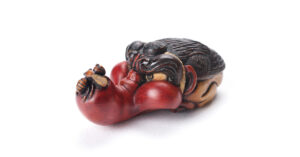Ishigumi 石組 ✿ The Japanese garden
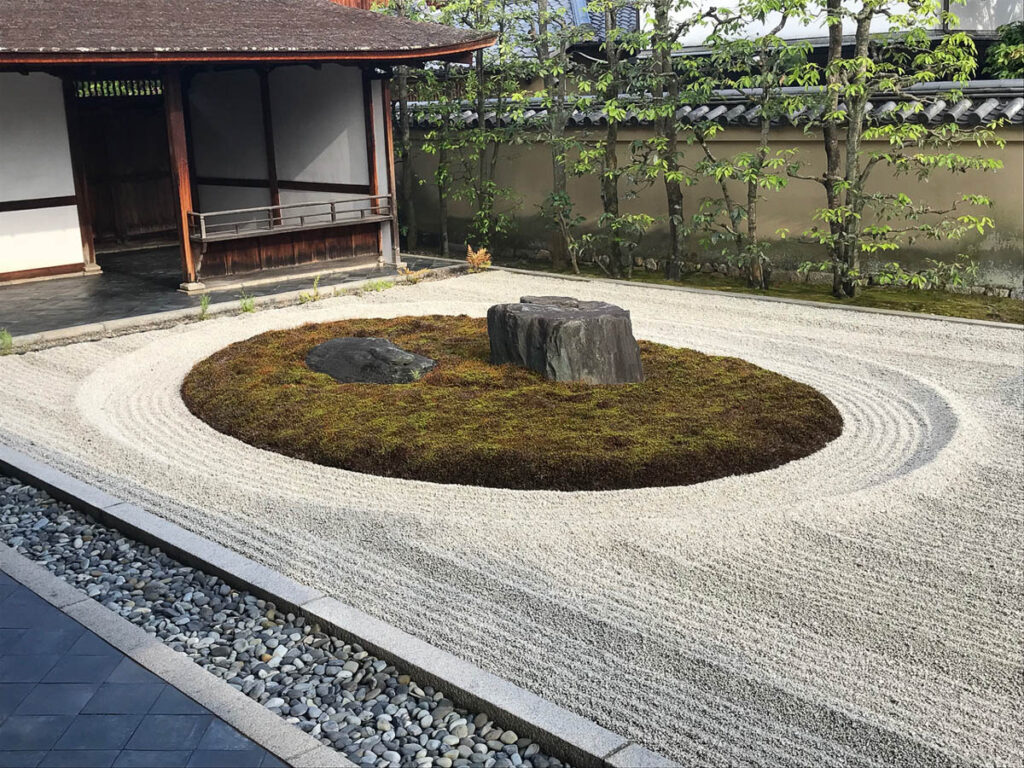
Isshidan garden is located in front of the Hōjō of Ryōgen-in. It is inspired by the chambers of Master Tōkei (1454-1518), House of the Single Branch on Vulture Peak. It is a Zen Buddhist karesansui (dry landscape) garden that expresses the stone of Mt Penglai. This refers to the Daoist belief in an auspicious island that contains the elixir of immortality. Photo: Gary Warner
✿
Each Japanese garden reflects the concept of an owner or a gardener over time. They express concepts of Shintoism, Daoism and Buddhism by incorporating elements of nature such as water, rocks, trees, plants and mountains.
Japanese have great skill in making everything in a compact size, like transforming a natural landscape into a garden, a big tree into a Bonsai tree, etc.
Sachiko Tamashige speaks about the skills of a good Japanese gardener:
One of the gardeners who I interviewed told me that the most important thing in creating a garden was to choose the main rocks and their position, which defines the beauty of the entire structure. The structure of the Japanese gardens involves a water pond, artificial mountain, then rocks, trees and plants. Skilful gardeners can put all these elements in the right position.
Mitate is the process of metaphor, such as when a big rock resembles a sacred mountain. The arrangement of rocks is called ishigumi 石組). Stones can be arranged to symbolise religious significance such as Horaisan mountain and Tsuru-shima (the island of the crane, which is a place to pray for long life) and Kame-shima (the island of the tortoise, also a place to pray for a long life).
✿
Please enjoy these stories from our garden about objects of Japanese culture:
 Forest of Craft ✿ A map of nature’s treasures - Robin Agemi helps map a Kyoto forest, including trees used by its traditional crafts.
Forest of Craft ✿ A map of nature’s treasures - Robin Agemi helps map a Kyoto forest, including trees used by its traditional crafts. Art of meditation: Attitudes to nature in Japanese gardens & Ikebana - Shoso Shimbo identifies the essence of Japanese Ikebana in the interior process of meditation.
Art of meditation: Attitudes to nature in Japanese gardens & Ikebana - Shoso Shimbo identifies the essence of Japanese Ikebana in the interior process of meditation. Misako Nakahira ✿ Waves of tsuzureori - We speak to Australian Tapestry Workshop weaver-in-residence, Misako Nakahira, about her unique technique of blending weaves.
Misako Nakahira ✿ Waves of tsuzureori - We speak to Australian Tapestry Workshop weaver-in-residence, Misako Nakahira, about her unique technique of blending weaves.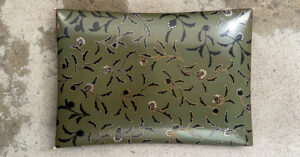 Saya Yamagishi ✿ Talismanic chintz - Our first laurel of 2024 goes to a Japanese lacquer artist who is enchanted by the arabesque patterns of medieval manuscripts.
Saya Yamagishi ✿ Talismanic chintz - Our first laurel of 2024 goes to a Japanese lacquer artist who is enchanted by the arabesque patterns of medieval manuscripts.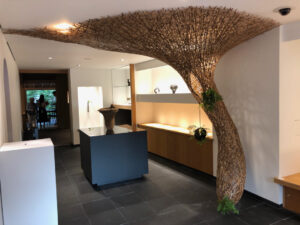 Chozetsugiko ✿ The transcendent technique of Meiji craftsmanship reimagined - Sachiko Tamashige heralds a remarkable new generation inspired by the hyper-realism of the Meiji era.
Chozetsugiko ✿ The transcendent technique of Meiji craftsmanship reimagined - Sachiko Tamashige heralds a remarkable new generation inspired by the hyper-realism of the Meiji era. Monkō (聞香): The Japanese way of listening to incense - Sachiko Tamashige offers a brief history of incense culture in Japan and the experience of visiting Kunjyukan in Kyoto.
Monkō (聞香): The Japanese way of listening to incense - Sachiko Tamashige offers a brief history of incense culture in Japan and the experience of visiting Kunjyukan in Kyoto.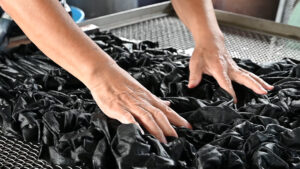 Kondo Weaving Mill: Industrial Japanese craftsmanship - Alisa Tietboehl writes about a Japanese weaving mill that sustains its local craft through skill and innovation.
Kondo Weaving Mill: Industrial Japanese craftsmanship - Alisa Tietboehl writes about a Japanese weaving mill that sustains its local craft through skill and innovation. Notes on sound and making: 01 – Listening to making - Gary Warner finds the shakuhachi Japanese flute evocative not only through its music when played, but also through the sounds produced in its making.
Notes on sound and making: 01 – Listening to making - Gary Warner finds the shakuhachi Japanese flute evocative not only through its music when played, but also through the sounds produced in its making.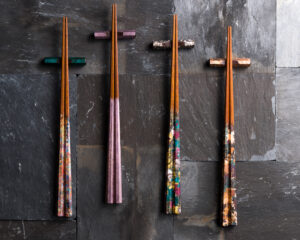 A kimono for food: Hikibaku chopsticks for honoured guests - Serendouce Crafts commissioned Nishijin brocade maker Kohei Murata to apply the lustrous kimono textile technique to a set of chopsticks.
A kimono for food: Hikibaku chopsticks for honoured guests - Serendouce Crafts commissioned Nishijin brocade maker Kohei Murata to apply the lustrous kimono textile technique to a set of chopsticks.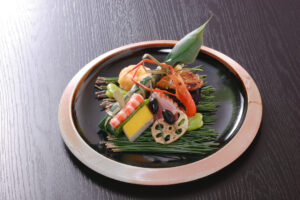 Ajiwau: A Japanese way of savouring life - Euan Craig shares his life at the wheel in a Japanese pottery village, where he makes tableware that helps savour the food and its moment.
Ajiwau: A Japanese way of savouring life - Euan Craig shares his life at the wheel in a Japanese pottery village, where he makes tableware that helps savour the food and its moment. Make and bring your own chopsticks - We ask Vipun Chanchlani about the challenge of making your own chopsticks and how we should bring our own to restaurants.
Make and bring your own chopsticks - We ask Vipun Chanchlani about the challenge of making your own chopsticks and how we should bring our own to restaurants.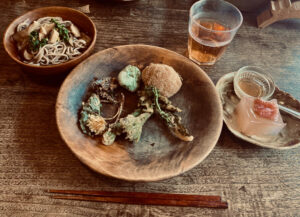 Foraging among the ruins of satoyama in rural Japan - Daniela Kato writes about the foraging practices that she shares with a village community under the mountain's shadow.
Foraging among the ruins of satoyama in rural Japan - Daniela Kato writes about the foraging practices that she shares with a village community under the mountain's shadow. The underlying delight of Japanese tableware - The Go for Kogei festival invited Brian Kennedy to dialogue with Kutani ceramicist Masaru Nakada in developing a playful set of tableware.
The underlying delight of Japanese tableware - The Go for Kogei festival invited Brian Kennedy to dialogue with Kutani ceramicist Masaru Nakada in developing a playful set of tableware.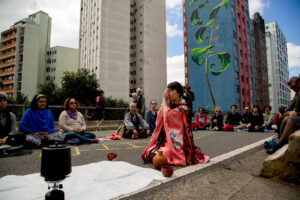 Erika Kobayashi ✿ A tea ceremony for Brazil - Liliana Morais interviews Brazilian performer Erika Kobayashi about how she updates the Japanese tea ceremony to suit the pulse of life in Brazil.
Erika Kobayashi ✿ A tea ceremony for Brazil - Liliana Morais interviews Brazilian performer Erika Kobayashi about how she updates the Japanese tea ceremony to suit the pulse of life in Brazil.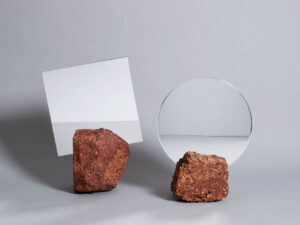 The bauxite challenge: Bioregional thinking and place-based making - Kyoko Hashimoto's place-based jewellery practice makes visible the hidden substances that fuel economic growth.
The bauxite challenge: Bioregional thinking and place-based making - Kyoko Hashimoto's place-based jewellery practice makes visible the hidden substances that fuel economic growth. Chiharu Shiota ✿ The Soul Trembles Ruptures Realities - Pamela See is intrigued by the Shinto roots in Chiharu Shiota's exhibition, in which she deconstructs the canvas to envelop the viewer in purifying threads.
Chiharu Shiota ✿ The Soul Trembles Ruptures Realities - Pamela See is intrigued by the Shinto roots in Chiharu Shiota's exhibition, in which she deconstructs the canvas to envelop the viewer in purifying threads.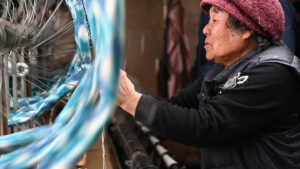 MAOTA: Five yarn dyed colours, inspired by Aizome - Alisa Ota Tietboehl reflects on her journey growing up around the world, where she developed a passion for Japanese craftsmanship and textiles.
MAOTA: Five yarn dyed colours, inspired by Aizome - Alisa Ota Tietboehl reflects on her journey growing up around the world, where she developed a passion for Japanese craftsmanship and textiles.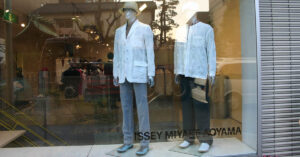 Issey Miyake: Pleating craft and technology together - LOkesh Ghai offers a personal tribute to the Japanese designer who did so much to bring Asian creativity to fashion, including an appreciation of Indian handmade textiles.
Issey Miyake: Pleating craft and technology together - LOkesh Ghai offers a personal tribute to the Japanese designer who did so much to bring Asian creativity to fashion, including an appreciation of Indian handmade textiles.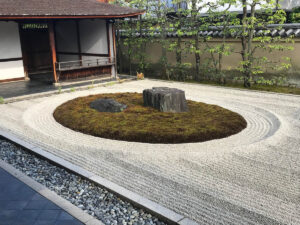 Ishigumi 石組 ✿ Japanese rock garden - Ishigumi transforms the mountain landscape into a garden form. Visit and enjoy stories from Japan's rich craft cultures.
Ishigumi 石組 ✿ Japanese rock garden - Ishigumi transforms the mountain landscape into a garden form. Visit and enjoy stories from Japan's rich craft cultures.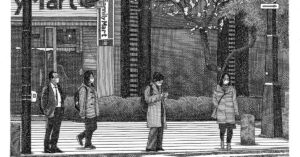 Bren Luke ✿ Life at a distance - Our August laurel is awarded to Bren Luke for his poignant animated illustration of a streetscape in Japan, which invokes the concept of ma, negative space, to reflect the era of social distancing.
Bren Luke ✿ Life at a distance - Our August laurel is awarded to Bren Luke for his poignant animated illustration of a streetscape in Japan, which invokes the concept of ma, negative space, to reflect the era of social distancing.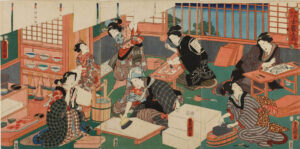 Craft Culture in Early Modern Japan: Learning by doing - D Wood reviews Christine Guth’s Craft Culture in Early Modern Japan and finds fascinating detail about the elaborate world of makers.
Craft Culture in Early Modern Japan: Learning by doing - D Wood reviews Christine Guth’s Craft Culture in Early Modern Japan and finds fascinating detail about the elaborate world of makers.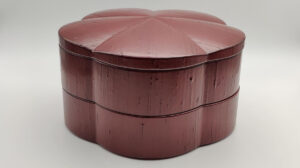 Genta HAYASHI ✿ Jūbako for the time of plum blossom - Our March laurel is awarded to Genta HAYASHI from Osaka for a beautifully made but complex lacquer container that celebrates the coming of spring and plum blossoms.
Genta HAYASHI ✿ Jūbako for the time of plum blossom - Our March laurel is awarded to Genta HAYASHI from Osaka for a beautifully made but complex lacquer container that celebrates the coming of spring and plum blossoms. Katsugi: Female divers of Japan come up for art - Zoe Devenport writes about an exhibition by Aiko Ohno and Zoe Porter that celebrates the life of female divers in ink and thread
Katsugi: Female divers of Japan come up for art - Zoe Devenport writes about an exhibition by Aiko Ohno and Zoe Porter that celebrates the life of female divers in ink and thread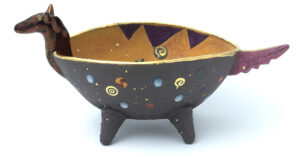 Imagining a nostalgic future: The cosmic ceramics of Douglas Black - Liliana Morais explores the world of a US-born ceramicist who gives expression to planetarity from his self-built house in the mountains of Japan.
Imagining a nostalgic future: The cosmic ceramics of Douglas Black - Liliana Morais explores the world of a US-born ceramicist who gives expression to planetarity from his self-built house in the mountains of Japan.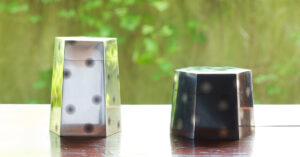 The box: A magic object of objects - Beginning with the Japanese animation Spirited Away, Bic Tieu traces her fascination for the magic of the box in Japanese craft and discovers how it connects humans and nature.
The box: A magic object of objects - Beginning with the Japanese animation Spirited Away, Bic Tieu traces her fascination for the magic of the box in Japanese craft and discovers how it connects humans and nature. Yuko Kikuchi: Where to find Mingei in Japan today - In a Garland podcast, Yuko Kikuchi finds the spirit of Mingei in contemporary Japan, associated with MUJI department store and manga comics.
Yuko Kikuchi: Where to find Mingei in Japan today - In a Garland podcast, Yuko Kikuchi finds the spirit of Mingei in contemporary Japan, associated with MUJI department store and manga comics.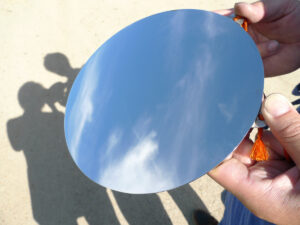 Alchemy in Japanese traditional craft: Forging and polishing the spiritual world - Sachiko Tamashige writes about two Japanese metalsmith families, Myochin and Yamamoto, who demonstrate an alchemical power to transport base metal into the spiritual realm.
Alchemy in Japanese traditional craft: Forging and polishing the spiritual world - Sachiko Tamashige writes about two Japanese metalsmith families, Myochin and Yamamoto, who demonstrate an alchemical power to transport base metal into the spiritual realm.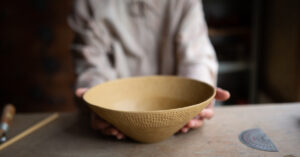 Utsuwa: The extraordinary is every day in Japan - Kylie and Tiffany Johnson share their journey to find makers of everyday objects in Japan, including Keigo and Chiaki Sakata at the To-ji Temple market in Kyoto.
Utsuwa: The extraordinary is every day in Japan - Kylie and Tiffany Johnson share their journey to find makers of everyday objects in Japan, including Keigo and Chiaki Sakata at the To-ji Temple market in Kyoto. Let’s go back to the campfire: The lesson of mingei - Liliana Morais looks critically at the decline of mingei and argues for a stronger social context for craft.
Let’s go back to the campfire: The lesson of mingei - Liliana Morais looks critically at the decline of mingei and argues for a stronger social context for craft.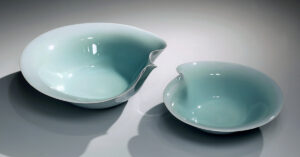 Kishōtenketsu: Kawase Shinobu’s celadon journey - Bonnie B. Lee writes about the four-part structure from Chinese poetry that informs the ceramics of Kawase Shinobu.
Kishōtenketsu: Kawase Shinobu’s celadon journey - Bonnie B. Lee writes about the four-part structure from Chinese poetry that informs the ceramics of Kawase Shinobu. Polishing: An overlooked craft - Jahan Rezakhanlou reveals the wonders of polishing in Japan, Uzbekistan and India.
Polishing: An overlooked craft - Jahan Rezakhanlou reveals the wonders of polishing in Japan, Uzbekistan and India.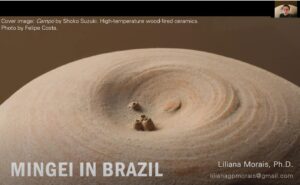 The spirit of Japanese mingei in Brazil - Our Reinventing the Wheel series considers the evolution of Japanese craft traditions in Brazil, as documented by Liliana Morais and Silvia Sasaoka.
The spirit of Japanese mingei in Brazil - Our Reinventing the Wheel series considers the evolution of Japanese craft traditions in Brazil, as documented by Liliana Morais and Silvia Sasaoka.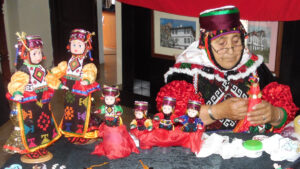 The Fidan doll: A bridge between Turkey and Japan - Songül ARAL finds a village woman who made a traditional doll after her children left home. But how did it find its way east to Japan and start an export business?
The Fidan doll: A bridge between Turkey and Japan - Songül ARAL finds a village woman who made a traditional doll after her children left home. But how did it find its way east to Japan and start an export business?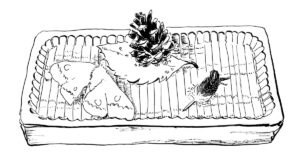 Water, Wood and Wild Things: Learning Craft and Cultivation in a Japanese Mountain Town – review - D Wood reviews a book about Yamanaka, a village in a "nether region" of Japan where beautiful traditions linger.
Water, Wood and Wild Things: Learning Craft and Cultivation in a Japanese Mountain Town – review - D Wood reviews a book about Yamanaka, a village in a "nether region" of Japan where beautiful traditions linger.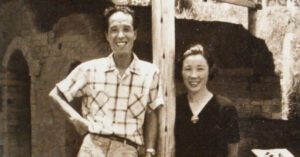 From Japan to Brazil: The ceramics of Shoko Suzuki - Liliana Morais follows a Japanese ceramicist who built a kiln in order to make a life between Japan and Brazil.
From Japan to Brazil: The ceramics of Shoko Suzuki - Liliana Morais follows a Japanese ceramicist who built a kiln in order to make a life between Japan and Brazil.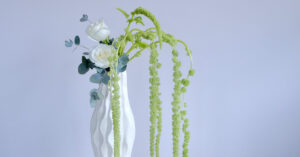 Ikebana: A flower arrangement in search of poetry - For Shoso Shimbo, the meaning of Ikebana goes beyond art and design.
Ikebana: A flower arrangement in search of poetry - For Shoso Shimbo, the meaning of Ikebana goes beyond art and design. Eastern glazes: The provenance of celadon, tenmoku and shino - Sandra Bowkett starts to question her right to use Japanese terms.
Eastern glazes: The provenance of celadon, tenmoku and shino - Sandra Bowkett starts to question her right to use Japanese terms.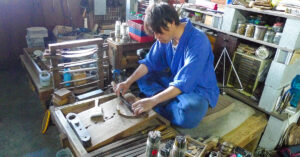 Alchemy in Japanese traditional craft: The transformation of light in Tamahagane forging and polishing - The eleventh talk in our Reinventing the Wheel series is in Kyoto, where Sachiko Tamashige introduces the traditional practice of sword and mirror polishing.
Alchemy in Japanese traditional craft: The transformation of light in Tamahagane forging and polishing - The eleventh talk in our Reinventing the Wheel series is in Kyoto, where Sachiko Tamashige introduces the traditional practice of sword and mirror polishing.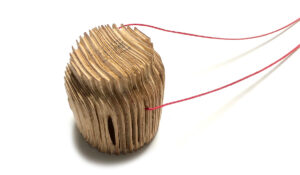 Senryu: Three little words make many objects - Sayumi Yokouchi, Mari Ishikawa and Mikiko Minewaki are inspired by the short Japanese poetry of Senryu to make beautiful jewellery.
Senryu: Three little words make many objects - Sayumi Yokouchi, Mari Ishikawa and Mikiko Minewaki are inspired by the short Japanese poetry of Senryu to make beautiful jewellery.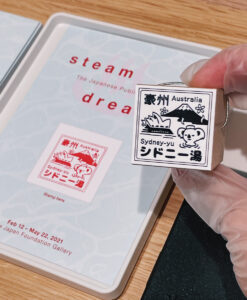 Toshizō Hirose ✿ The sentō stamp today - What's the life of a stamp maker in Japan today? We ask Toshizō Hirose, who was commissioned to make a sentō stamp for an exhibition about Japanese bathhouses in Sydney.
Toshizō Hirose ✿ The sentō stamp today - What's the life of a stamp maker in Japan today? We ask Toshizō Hirose, who was commissioned to make a sentō stamp for an exhibition about Japanese bathhouses in Sydney. Futaba ✿ Living with a broken beauty - Wakana Yanagida profiles the Japanese vlogger who celebrates the pleasure of living with handmade objects.
Futaba ✿ Living with a broken beauty - Wakana Yanagida profiles the Japanese vlogger who celebrates the pleasure of living with handmade objects.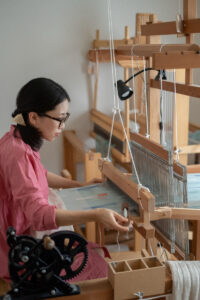 The Kawashima Textile School ✿ Ancient kasuri is alive in Japan - Helen Ting talks to Emma Omote about her role in keeping the ancient craft of kasuri weaving alive and asks: how resilient is this specialist craft skill in the age of machinery and mass production?
The Kawashima Textile School ✿ Ancient kasuri is alive in Japan - Helen Ting talks to Emma Omote about her role in keeping the ancient craft of kasuri weaving alive and asks: how resilient is this specialist craft skill in the age of machinery and mass production?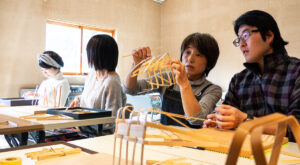 Finding Taketa: Serendipitous discovery and reflection in practice research - On a humid Sunday, Jo McCallum begins a journey to understand the particular mystery that is bamboo in Japan.
Finding Taketa: Serendipitous discovery and reflection in practice research - On a humid Sunday, Jo McCallum begins a journey to understand the particular mystery that is bamboo in Japan.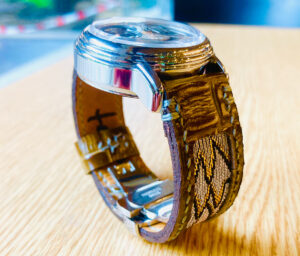 Kimono o’clock: The watchstrap artist - A striking example of "living craft" is Tong's incorporation of heritage Japanese textile into something you wear every day on your wrist.
Kimono o’clock: The watchstrap artist - A striking example of "living craft" is Tong's incorporation of heritage Japanese textile into something you wear every day on your wrist. Masahiro Sasaki ✿ Glass comes first - The glass artist Masahiro Sasaki follows the Japanese way of craft, or kogei, where materials comes before concept.
Masahiro Sasaki ✿ Glass comes first - The glass artist Masahiro Sasaki follows the Japanese way of craft, or kogei, where materials comes before concept. 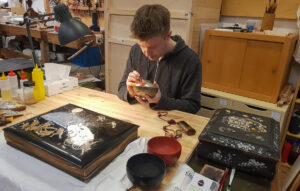 Following the Lacquer God - Dave van Gompel writes about the extraordinary commitment required to master lacquer, and why it has a new-found relevance today.
Following the Lacquer God - Dave van Gompel writes about the extraordinary commitment required to master lacquer, and why it has a new-found relevance today.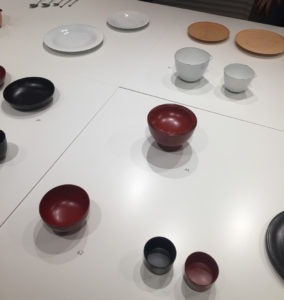 Seikatsu Kogei: The Japanese carpe diem of the arts - Madeleine Thomas finds the embodiment of simple beauty known as Seikatsu Kogei in the presence of woodworker Ryuji Mitani from Matsumoto, Japan.
Seikatsu Kogei: The Japanese carpe diem of the arts - Madeleine Thomas finds the embodiment of simple beauty known as Seikatsu Kogei in the presence of woodworker Ryuji Mitani from Matsumoto, Japan. Seikatsu Kogei: Standard-issue craft - Related to our 生きている工芸 Ikiteiru kōgei (Living craft) issue, this exhibition at the Japan Foundation emphasises the beauty of ordinary handmade objects.
Seikatsu Kogei: Standard-issue craft - Related to our 生きている工芸 Ikiteiru kōgei (Living craft) issue, this exhibition at the Japan Foundation emphasises the beauty of ordinary handmade objects. 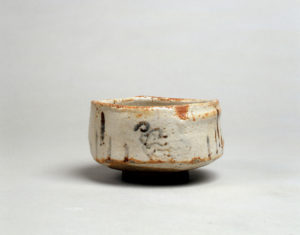 Mino-momoyama ware - Gallery VOICE introduces some of the unique Japanese ceramic ware that is the fruit of the legendary Momoyama kiln in Toki City Gifu prefecture.
Mino-momoyama ware - Gallery VOICE introduces some of the unique Japanese ceramic ware that is the fruit of the legendary Momoyama kiln in Toki City Gifu prefecture.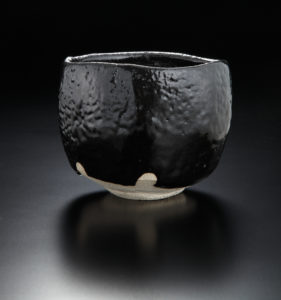 Japan black: Setoguro ware ceramics - Tomoko Kawakami writes about the exhibition, Kirin-ji: The challenge of making ceremonial tea bowls
Japan black: Setoguro ware ceramics - Tomoko Kawakami writes about the exhibition, Kirin-ji: The challenge of making ceremonial tea bowls Yuri KEZUKA ✿ Our world in a clay mirror - Kurt Brereton finds a Japanese ceramic artist whose work defies hyper-consumerism.
Yuri KEZUKA ✿ Our world in a clay mirror - Kurt Brereton finds a Japanese ceramic artist whose work defies hyper-consumerism. Harry T. Morris ✿ The spirit of fuzei in furniture - Artist in Residence at The Bower Reuse and Repair Centre, Harry T. Morris, is inspired by the Japanese concept of fuzei to use discarded materials in producing furniture of lasting value. We learn the experiences in Japan that inspired this appreciation of fuzei.
Harry T. Morris ✿ The spirit of fuzei in furniture - Artist in Residence at The Bower Reuse and Repair Centre, Harry T. Morris, is inspired by the Japanese concept of fuzei to use discarded materials in producing furniture of lasting value. We learn the experiences in Japan that inspired this appreciation of fuzei.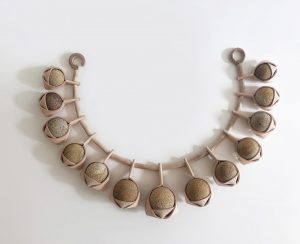 Kyoko Hashimoto ✿ the Musubi necklace - Kyoko Hashimoto's Musubi necklace is a striking example of how a Japanese craft technique can help us appreciate the local quality of another country, in this case the sandstone that defines the Sydney basin.
Kyoko Hashimoto ✿ the Musubi necklace - Kyoko Hashimoto's Musubi necklace is a striking example of how a Japanese craft technique can help us appreciate the local quality of another country, in this case the sandstone that defines the Sydney basin.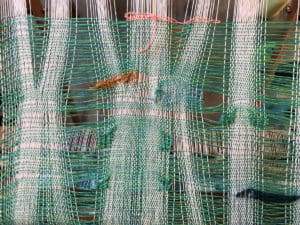 Saori weaving: Striving for irregularity - Kaz Madigan shares her unique relationship to the Japanese Saori weaving workshop, which values the human touch as part of Zen Buddhism
Saori weaving: Striving for irregularity - Kaz Madigan shares her unique relationship to the Japanese Saori weaving workshop, which values the human touch as part of Zen Buddhism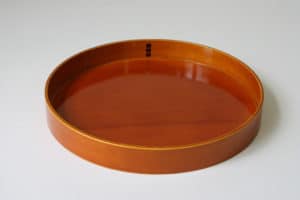 Ceramics for the Autumn Takayama Festival (Hachiman Matsuri) - For the upcoming Autumn Takayama Festival, Gallery VOICE is presenting work by six ceramic artists and the golden lacquer art called Shunkei.
Ceramics for the Autumn Takayama Festival (Hachiman Matsuri) - For the upcoming Autumn Takayama Festival, Gallery VOICE is presenting work by six ceramic artists and the golden lacquer art called Shunkei. Mikio Toki ✿ Edo kites keep hope afloat - Our pursuit of beautiful and thoughtful objects can take us far beyond the gallery. From kite-maker Mikio Toki, we learn that art taken to the skies can be a powerful way of giving thanks.
Mikio Toki ✿ Edo kites keep hope afloat - Our pursuit of beautiful and thoughtful objects can take us far beyond the gallery. From kite-maker Mikio Toki, we learn that art taken to the skies can be a powerful way of giving thanks.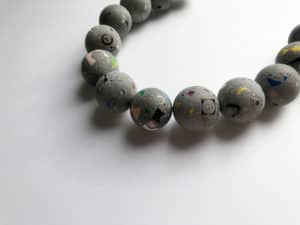 Rough translation: The language of materials in three exhibitions - Brian Parkes reflects on the material translations that occur across three exhibitions at CraftACT.
Rough translation: The language of materials in three exhibitions - Brian Parkes reflects on the material translations that occur across three exhibitions at CraftACT.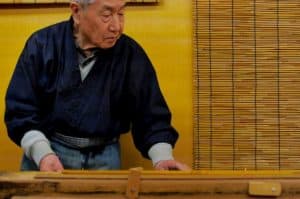 Becoming blind to climate change: An age-old Japanese solution - This is a time when we might look to traditional crafts which offered offline means of staying cool, such as the paper fan and these Japanese screens.
Becoming blind to climate change: An age-old Japanese solution - This is a time when we might look to traditional crafts which offered offline means of staying cool, such as the paper fan and these Japanese screens.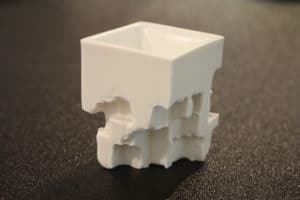 The shape of YOI よい: A drunken evening of Japanese ceramics - An exhibition of Japanese ceramics based on the concept of YOI, which can mean good, evening and drunkenness.
The shape of YOI よい: A drunken evening of Japanese ceramics - An exhibition of Japanese ceramics based on the concept of YOI, which can mean good, evening and drunkenness.✿
Go back to the Garden.

